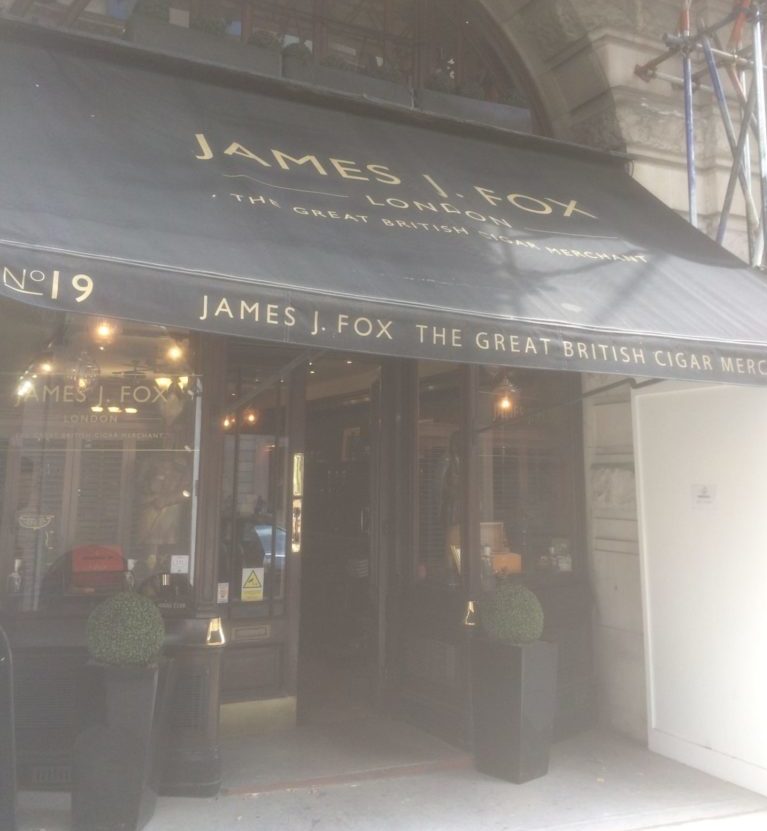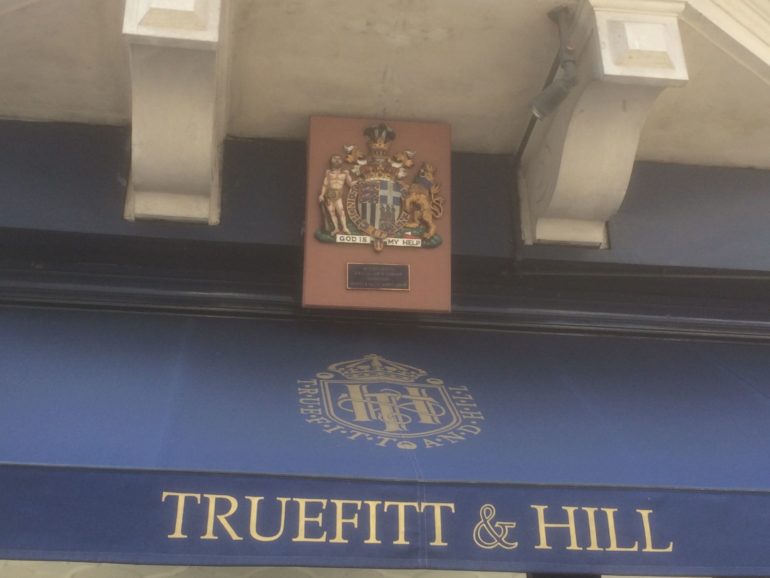Since 1661, St. James’s Street in London has been a go to destination for luxury retailing. Many of the posh shops on the street originally catered to the clientele from some of London’s best-known gentlemen’s clubs on the same street, including Brooks’s, the Carlton Club and White’s. Now St. James’s Street in London is world famous and a go to place for top of the range products and services offered with traditional English flare. With that in mind, below are 5 of the posh shops on St. James’s Street in London.
Berry Bros. & Rudd | est. 1698
Address: 3 St James’s Street (reception) & 63 Pall Mall (shop)
This wine and spirit merchants founded in 1698 still trades from the same premises and has two Royal Warrants from The Queen and Prince of Wales. Berry Bros. & Rudd has recently undergone a major refurbishment. In fact, the shop on St James’s Street was closed and has recently reopened. Meanwhile they have opened another shop around the corner in 63 Pall Mall which will be connected through the back. The original shop will have a museum with the famous scales and this is where large orders will be made. Events and tastings will take place in this building. The shop in 63 Pall Mall is where customers will go to pick up a bottle of wine and for internet collections. Prices: Berry Brothers & Rudd sells wine for as little as £8 a bottle and their ‘Good Ordinary Claret’ costs £9:95. At the other end of the scale Romanée Conti, a Burgundy from one of the most expensive vineyards in the world, costs £19,995.
 London St James’s Street: Berry Brothers & Rudd. Photo Credit: © Edwin Lerner.
London St James’s Street: Berry Brothers & Rudd. Photo Credit: © Edwin Lerner.
John Lobb Ltd. | est. 1866
Address: 9 St. James’s Street, London, SW1A 1EF
Lobbs is a luxury shoes and boots shop founded in 1866, family run and independent, with a bespoke workshop in St James’s Street. Ready to wear shoes are sold in Jermyn Street. Prices: A pair of hand-made shoes from Lobbs costs £5,000 upwards (including VAT) plus another £1000 for the shoe trees that go with them. There is a waiting list of six months.
 London St James’s Street: John Lobb Bootmaker. Photo Credit: © Edwin Lerner.
London St James’s Street: John Lobb Bootmaker. Photo Credit: © Edwin Lerner.
Lock & Co. Hatters | est. 1676
6 St James’s Street, London, SW1A 1EF
Lock & Co. is the oldest hat shop in the world, a royal warrant holder to the Duke of Edinburgh and Prince of Wales and is one of London’s oldest family run businesses. Founded in 1676 as a men’s hat shop, Lock moved to its present location in 1765 and the lady’s milliners opened in 1993. The museum displays hats worn by Sir Winston Churchill and Lord Nelson and you can see the Queen’s head block that was used for the crowns at her coronation as well as many famous head shapes. Prices: The average cost of a Lock’s hat is £265, which is the price of their Panamas, while caps can be bought for £99 (£145 if fully handmade) while a Locks bowler costs £350.
 London St James’s Street: Lock & Company, Hatters. Photo Credit: © Edwin Lerner.
London St James’s Street: Lock & Company, Hatters. Photo Credit: © Edwin Lerner.
James J. Fox | est. 1787
19 St James’s Street, London, SW1A 1ES
The tobacco business started trading here in 1787 and is the oldest cigar store in the world. It is one of very few shops exempt from the smoking ban and has supplied cigars to Sir Winston Churchill, Oscar Wilde, the royal family and other notables. Downstairs there is an exhibition devoted to the shop and famous cigar smokers particularly Churchill along with the chair he would sit in when placing his orders. Blue Badge Guides are welcome, but the maximum number allowed would be ten to twelve. For clients who want to buy they can visit the humidor at the back of the store. The Salon upstairs is open to enjoy a smoke and clients who like a cigar are welcome to buy one in the shop and smoke it upstairs. Warning – it is thick with smoke, so non-smokers might not be keen to accompany! Prices: The cheapest handmade cigars sold by Fox cost £7, while the most expensive are Cohiba Behikes, which cost £4,000 each, with a minimum order of a box of forty (£160,000).
 London St James’s Street: James J. Fox Cigar Shop. Photo Credit: © Edwin Lerner.
London St James’s Street: James J. Fox Cigar Shop. Photo Credit: © Edwin Lerner.
Truefitt & Hill | est. 1805
71 St James’s Street, London, SW1A 1PH
Established in 1805, Truefitts & Hill is the oldest barbershop in the world according to the Guinness Book of Records and is a royal warrant holder to the Duke of Edinburgh. It has been in Saint James’s Street since 1994 and offers traditional hot towel wet shaves, haircuts and complimentary shoe shines. Prices: A gentleman’s haircut at Truefitt & Hill costs £45, as does a shave. No lady’s haircuts.
 London St James’s Street: Truefitt & Hill. Photo Credit: © Edwin Lerner.
London St James’s Street: Truefitt & Hill. Photo Credit: © Edwin Lerner.







Leave a Reply